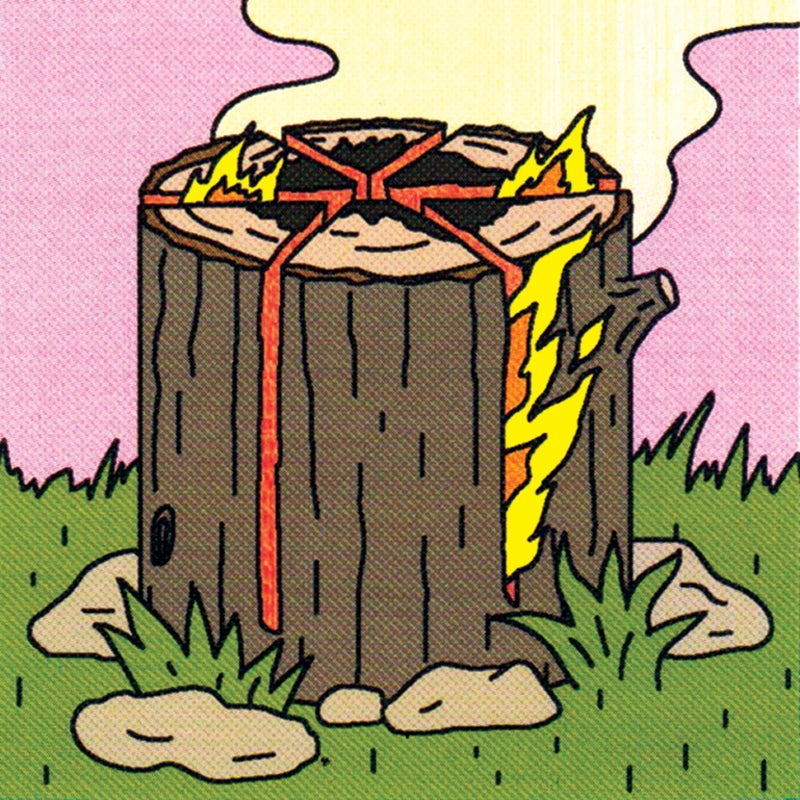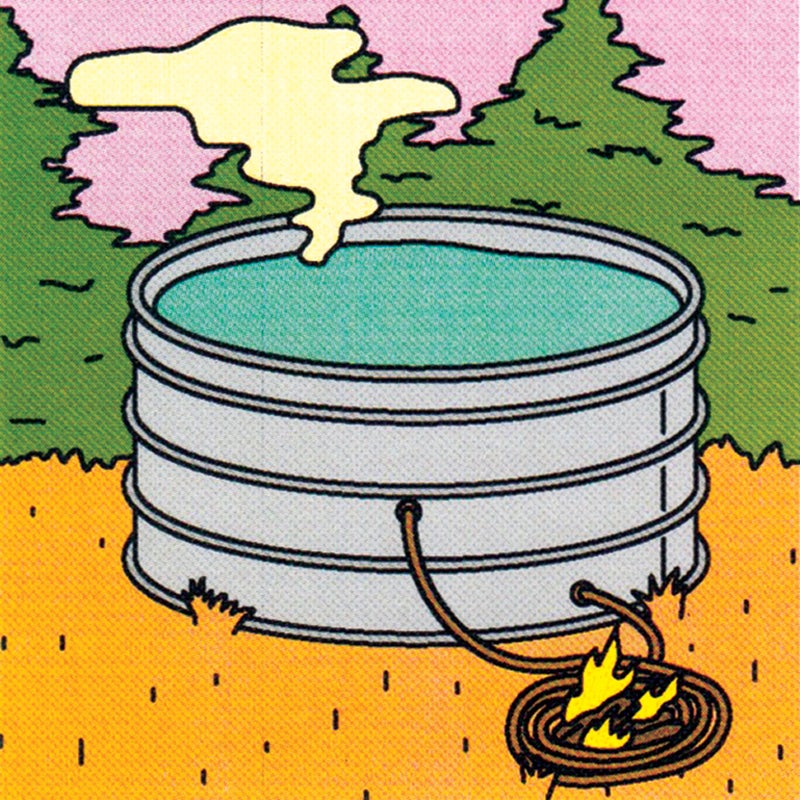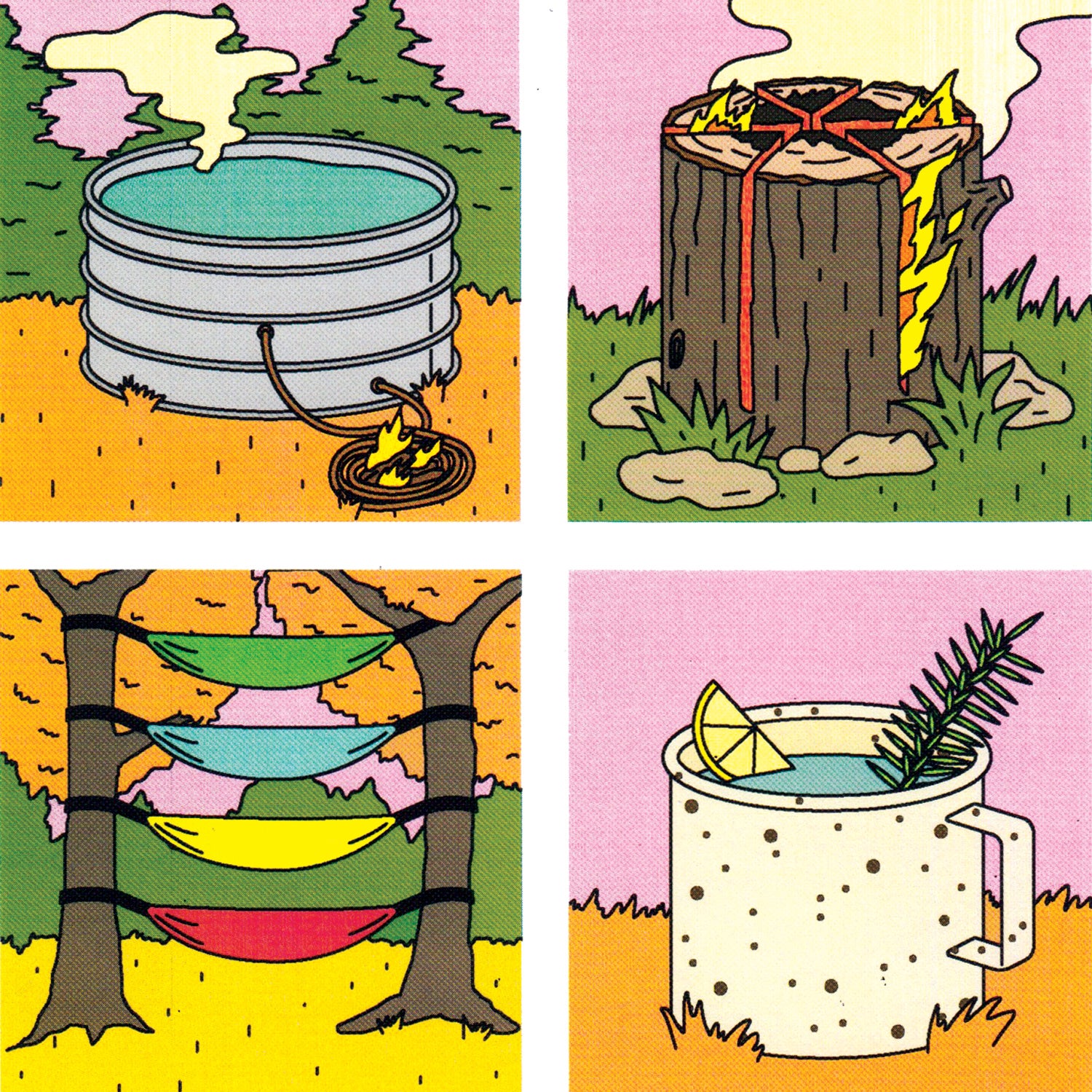From a hardware store–supplied hot tub to a hammock with a view, level up your next outing with these party pleasers.
Forage for cocktail ingredients.

Pine needles, which are packed with vitamin C, were brewed into a tea by sailors to stave off scurvy. You’re going to use the wild evergreen to spice up a hot toddy. Needles from white pine in the eastern U.S. and Douglas fir in the West both contribute bright citrus flavors. Drop a handful of needles into three cups of boiling water. Simmer for 20 minutes, then pour into mugs, adding lemon, honey, and whiskey to taste. For an Instagram-ready garnish, hang a cluster of needles on the rim.
Build a hammock tower.

A single hammock is relaxing. Several hammocks stacked in a tower is a unique, full-on experience for a group. Start by securely hanging the first hammock a few feet off the ground. Next, standing on one end of that hammock and then the other—and holding on to the tree each time—hang the second hammock a few feet above the first. Keep going as high as you like. To safely ascend from one level to the next, lie in the first hammock and grab the one above you with your hands, then maneuver your feet and knees up around either side. Lift your hips and flip up, rolling the higher hammock over in the process, so you end up lying facedown.
Make a Swedish torch.

This technique turns a log into a lasting flame that’s mobile and easy to extinguish at the end of the night. Stand an approximately three-foot-tall, one- to two-foot-wide dry log upright. With a cordless driver fitted with a half-inch bit, drill a large hole into the center, to a depth of about three-quarters of the log’s length. Next, use a chainsaw to notch a cross into the top of the log, to the same depth as the hole. If it’s a small log, just two notches will work; if it’s a thick log, you’ll want more. Place small pieces of kindling into the hole and light them, being careful to shield the flame from the wind in open terrain. Add more kindling until the embers drop into the center of the log, where they’ll begin burning the wood from the inside out. Make a few torches and place them around the campsite.
Create your own hot spring.

With the help of science and a little plumbing, you can build your very own hot spring. All you need is a metal tub, a campfire, three-quarter-inch copper tubing, and some threaded fittings. Start with a 100-gallon stock tank or even a kiddie pool. Drill two holes, one above the other, in the side of the tank, large enough for the threaded fittings, which go inside the holes to keep the connections watertight. Fashion a two- to three-foot-tall cylindrical coil from a 30-foot-long piece of tubing (picture a moonshine still) and straighten out a two- to three-foot section at each extreme. Connect the ends to the fittings in the tub. The bottom is the cold-water intake; the top is the hot-water outlet. Fill the tub with water, making sure the coil is full, too. (Empty copper tubing can melt.) In the middle of the coil, build a fire containing a few small logs. Thanks to a process called thermosiphoning, the fire will draw cold water from the tub via the intake, heat it, and return it to the tub via the outlet. A few things to keep in mind: the outlet needs to be at the coil’s highest point, and it helps if the intake is angled down slightly into the hot coil so gravity can help. Depending on how much water the tub holds, it can take a few hours to reach a comfortable temperature. Plan accordingly.

